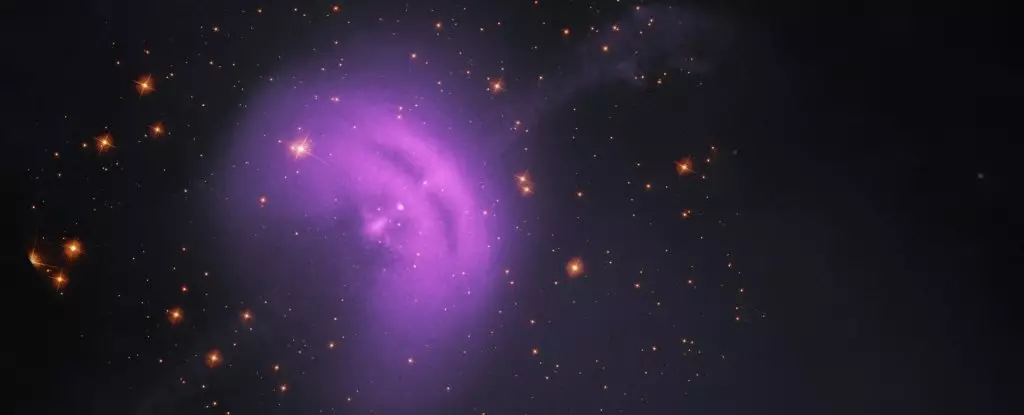Recent advancements in astrophysical research have offered intriguing insights into the origins and characteristics of cosmic-ray electrons and positrons, particularly those exhibiting extraordinary high energy levels. A distinct subset of cosmic rays, these particles showcase energies that propel them to the forefront of scientific inquiry. The findings emanate from the High Energy Stereoscopic System (H.E.S.S.) Observatory located in the stark Namibian desert, marking a pivotal development in our understanding of cosmic events and their implications for Earth.
Cosmic rays consist primarily of protons, nuclei, and a smaller fraction of electrons and positrons. The electrons and positrons identified by H.E.S.S. are formidable agents of data, demonstrating energies up to an astonishing 40 teraelectronvolts (TeV). This extraordinary energy level allows researchers to hypothesize that these cosmic particles originate from sources alarmingly close to our Solar System—potentially within just a few thousand light-years in the Milky Way. This localized origin enhances both the potential for identification of the sources and the implications for broader astrophysics studies.
Despite the daunting energy and impact of cosmic rays, it is crucial to recognize that Earth serves as a protective haven against these high-energy particles. The atmosphere acts as a shield, mitigating the effects of cosmic rays. Upon entry into the atmosphere, cosmic rays undergo a transformation, culminating in a burst of Cherenkov radiation—a phenomenon akin to a sonic boom, albeit significantly fainter. This radiation serves as the signature of cosmic interactions and is what H.E.S.S. was meticulously designed to detect.
One of the compelling dilemmas faced by astrophysicists in identifying cosmic-ray electrons (CRe) lies in their distinction from gamma rays. Gamma rays present a more straightforward path through the universe, allowing scientists to pinpoint their sources; conversely, CRe possess chaotic trajectories due to their charged nature, complicating efforts to trace their origins. The challenge remains significant as the interactions between CRe and Earth’s magnetic fields create overlapping signals, necessitating rigorous data analysis to parse the complex results.
To discern the high-energy CRe members from the broader pool of cosmic rays, researchers analyzed reams of data collected by H.E.S.S. The findings revealed sharp energy distribution characteristics, particularly a notable cut-off at 1.17 TeV. This decisive threshold signifies that the sources of these particular high-energy electrons are likely limited to just a few candidates or even a single origin. The specificity of this energy curve resonates as a powerful indicator of the underlying physics, suggesting that fewer cosmic events lead to such extreme particles, potentially yielding new avenues for investigation.
The potential sources identified by scientists include supernova remnants such as the Monogem Ring and the dying Wolf-Rayet star γ2 Velorum, or even pulsars like Vela and Geminga. Some scientists speculate that the cosmic-ray electrons may have origins in ancient supernova remnants that have lost their visibility over time, leaving us with the mystery of tracing their pathways. The age and remnants of these cosmic phenomena will require further exploration and might provide the breakthrough needed to connect the observed cosmic rays to their origins.
Future Directions in Cosmic Ray Research
The current findings not only enhance our understanding of cosmic-ray electrons but also open the door to future research endeavors. The team at H.E.S.S. plans to delve deeper into the data, pursuing the possibility of identifying directional patterns associated with CRe emissions. If successful, they could expand the knowledge base of cosmic-ray sources and the mechanisms behind their acceleration to high energies.
Moreover, the implications of this research extend beyond cosmic-ray studies; they are vital in enhancing our broader understanding of astrophysical processes, including star formation and the circumstances leading to supernova events. Given the relatively recent insights into high-energy CRe, it is expected that this research will yield crucial data in the coming years, providing a comprehensive framework for future studies.
The investigation into high-energy cosmic-ray electrons serves as a remarkable reminder of the dynamic complexity of our universe. With this latest exploration into cosmic events, researchers are not only answering longstanding questions but also paving pathways for new inquiries in astrophysics. As scientists continue to probe the depths of space through observatories like H.E.S.S., we inch closer to unraveling the mysteries that have long captivated the imagination of humanity. The cosmos, in its vastness, maintains secrets worth unraveling, and high-energy cosmic rays simply mark the beginning of this scientific odyssey.


Leave a Reply